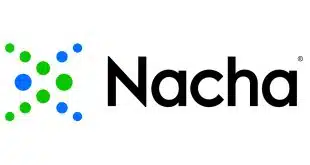The first chapter in the U.S. conversion to the EMV chip card standard is not even complete, but a leading payment card manufacturer sees growing interest in the next chapter, one that could be centered on so-called dual-interface cards that enable contact and contactless transactions.
The vast majority of U.S. EMV cards issued so far are of the contact variety, in which the customer inserts, or “dips,” a chip card into a merchant’s point-of-sale terminal or an ATM. Dual-interface cards have a chip for contact transactions, but also an antenna that supports contactless transactions. Steve Montross, president and chief executive of Littleton, Colo.-based card manufacturer CPI Card Group Inc., said Wednesday that he is seeing increased activity with dual-interface cards and that a major credit card issuer recently chose CPI to conduct a pilot program with the cards.
“Following this initial conversion to EMV cards in the marketplace, we expect a second conversion for a portion of the market to dual interface, or what we call tap-and-go, cards,” Montross told analysts at a conference call to review CPI’s fourth-quarter financial results. “We’re working with a number of other issuers to get dual-interface products into their product roadmaps,” he said, according to a call transcript from Thomson Reuters StreetEvents.
Montross’s observations at least partially confirm what industry executives told Digital Transactions magazine a year ago—that the early part of the U.S. EMV conversion would be dominated by contact cards, which cost only about half as much as a dual-interface card, but that issuers would take a serious look at dual-interface cards as they adjusted to the new EMV world and the first rounds of chip cards are replaced under normal re-issuance schedules.
While cheaper than dual-interface cards, contact cards have their downsides, particularly in transaction speed. A contactless transaction takes only a fraction of the time of a contact transaction, which requires the card to be inserted for several seconds.
Another factor in favor of dual-interface cards is that most EMV terminals have the potential to handle contactless transactions via near-field communication (NFC) technology, even though many such terminals don’t yet have NFC turned on. But with NFC-equipped smart phones proliferating and mobile-payment services sprouting, the number of contactless-reading terminals is expected to grow.
Montross said CPI has been issuing dual-interface cards for two customers so far, in small volumes. “We expect to see increasing dual-interface card issuance starting from a low level in 2016 and growing to a more meaningful market penetration over the next few years,” he said.
Montross also said that CPI is providing dual-interface prepaid cards for two Canadian issuers. Prepaid cards are a major revenue source for CPI.
The card networks’ EMV liability shifts took effect Oct. 1, 2015, spurring a surge in chip card orders in 2014, 2015, and into this year. C said the number of EMV cards it sold in the fourth quarter to U.S. credit and debit card issuers increased 21.3% year over year, and that in all of 2015, U.S. debit and credit segment net sales rose 72.3% from 2014.
CPI’s net quarterly sales were $93.6 million, up 6.5% from a year earlier. The company posted a $2.39 million loss, mainly because of one-time interest expenses, some arising from its initial public offering.
CPI reported net sales of $374.1 million for all of 2015, an increase of 43% from the prior year, and income from continuing operations of $31.3 million, nearly double that of 2014. After interest and debt-related expenses, the company posted a net loss for the year of $1.69 million.




